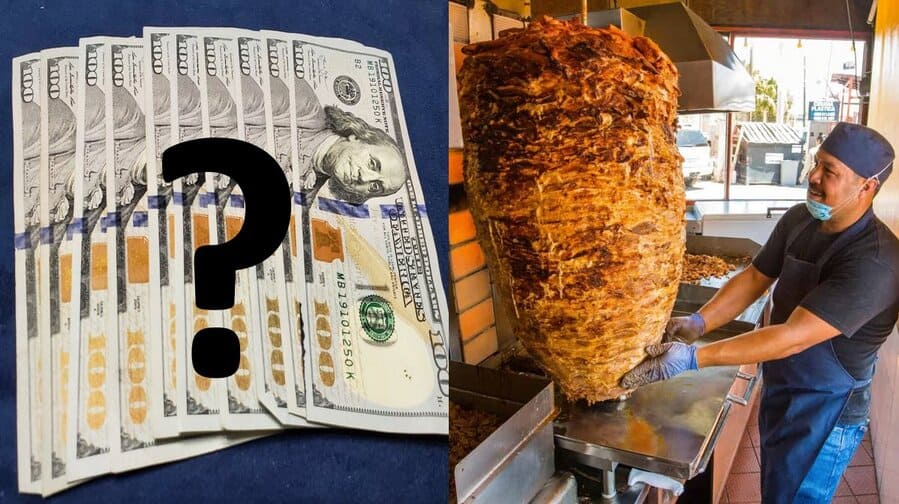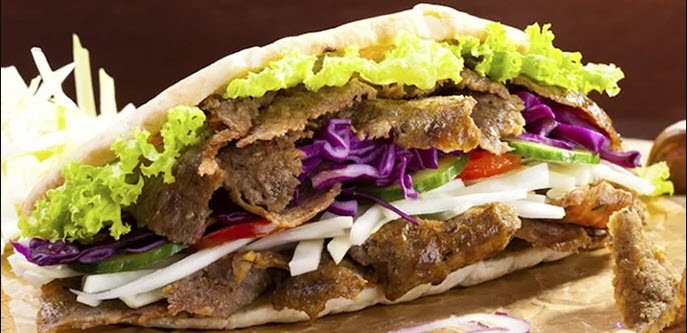Kebab shops are an increasingly popular option when it comes to late night snacks or whenever you want a quick hot meal via fast food. While kebab shops are gaining major market share in Europe and North America (often thanks to the Doner Kebab) but many areas in the Middle East and the Mediterranean have loved kebabs for many decades, if not centuries. This makes sense considering these are the areas where many different styles of kebabs come from!
It’s not hard to see why kebabs are so popular. They are a quick and delicious meal option that mixes savory grilled meats, rich sauces, and various accompaniments based on the style of kebab since Doner Kebabs, Shish Kebabs, and other various kebabs are prepared in different ways. Some are served with pita bread, others have sides like rice and salad, while others are a straight skewer.
This leads to an obvious question: Just how profitable can kebab shops be, and generally do they make money? Are kebab shops profitable?
Kebab shops have seen an explosion in growth due to the high demand, relatively low cost for a restaurant-style business, and the high potential for profit from running a successful kebab shop business.
There isn’t an explosion in a type or style of restaurant there’s generally a reason for it. While it isn’t a guarantee, there is a lot of excitement around the potential profitability that a good kebab shop can bring to the table in many different cities whether very large or relatively small.
Other factors to look at to see if a shop will be profitable include:
- Location
- Food quality
- Pricing
- Supply expenses
- Demand
- Marketing
- Quality of food
While the profitability of kebab shops will vary based on what the individual circumstances are, there’s no question that the demand for good high-quality kebabs is going to remain strong not just in the present but heading into the future, as well. With the right combination of strategy, passion, and commitment, there are many kebab shop owners finding that their shop can be an extremely profitable venture.

Key Factors Influencing Kebab Shop Profitability
There are multiple factors that will affect just how profitable a kebab shop can be. Let’s take an in-depth look at several of these influences and deep dive them so if you’re considering a kebab shop you will know whether or not it’s worth a shot.
Location and Rent
The success and profitability of a kebab shop can largely depend on its location. You need to not only be located in a city or town that has enough people with enough disposable income who love kebabs to make this work, but in addition to that the higher the foot traffic in an area, the more likely a kebab shop located there is to be profitable. Foot traffic is something that should never be ignored.
Rent is a major expense and finding the sweet spot of an inexpensive or relatively inexpensive rent (or even better, ownership of a property if you can manage that), though sometimes an expensive area is worth it if the sheer amount of foot traffic or customers make it profitable.
Don’t forget that part of location is licenses and permits. Some cities, states, or locations have major licensing fees while other locations are much more reasonable. These expenses can go a long way towards making a kebab shop profitable (or not).
Target Market and Competitors
Understanding the target market is crucial for the profitability of a kebab shop. Kebabs, such as doner kebab, are popular fast food options in Europe, particularly in the UK and Germany. In Western Europe most people are thinking of Doner Kebabs when they hear about a kebab shop which means if you’re going a different direction that could potentially be a problem.
You also want to know if you’ll be the only kebab shop in an area or if you’ll be competing with five other shops already in the area. The earlier situation is obviously much better than the latter one.
You also want to understand localized culture. Some areas might be heavily vegetarian while others don’t have a vegetarian to be found anywhere. Make sure you’re going into an area open to a kebab shop and consider how you can make some localized adaptations or changes to have offerings that are not only unique to your shop but will also make you very popular locally!
Menu and Cuisine
The selection and quality of food is vital. A delicious high quality kebab is going to keep customers happy and help to drive repeat business, which is a huge tell on how profitable a kebab shop, or any other restaurant, will be. When you have lots of repeat customers, that also means you will have lots of great word of mouth recommendations to friends and new potential customers.
There’s also just cost. A fish kebab might be inexpensive on the coast, but if you’re opening a kebab shop in the Midwest, this could be an expensive option that is harder to make profitable as a selection. That said, many people are very open to enjoying a wide variety of kebab tastes and styles and a diverse menu with a wide selection will often attract a broad group of diners.
If you notice one style is very popular and another almost never gets ordered, you can start adjusting the food you order, and the available menu items, accordingly in order to save costs and increase profits. But it’s better to start broader, however don’t go so broad as to have mediocre dishes. Kebab shops can get away with having relatively few menu options if those options are outstanding, aka delicious.
Financial Aspects
There are some very specific financial aspects that need to be taken into consideration when setting up a profitable kebab shop.
Setting Up Costs
Opening a kebab shop requires an initial investment to cover various expenses such as purchasing equipment, leasing a location, and obtaining the necessary permits, and that’s all before buying your first food!
The cost of setting up a kebab shop can vary, depending on factors like size, location, and type of equipment needed. In most places smaller establishments can expect to spend between $75,000 and $150,000, while more significant investments might surpass the $250,000 mark.
Potential investors should conduct thorough market research and prepare a detailed budget to determine the precise amount needed to start their business and figure out what monthly loan payments and operating expenses will be necessary to make.
Revenue & Growth
The profitability of a kebab shop depends on several factors, including menu prices, operating costs, and customer demand. To ensure financial viability, a business owner must carefully analyze these factors and create a solid financial forecast. According to a 2019 survey by British Kebab, the kebab industry contributes over £2.8 billion to the British economy each year, demonstrating the sector’s potential for revenue and growth.
In terms of revenue generation, it is essential to set menu prices that are both competitive and profitable. This means considering production and labor costs while keeping an eye on market trends and customer preferences. It is also crucial to minimize overhead costs to maximize profit margins.
To maintain a growing and successful kebab shop, business owners should focus on customer satisfaction and loyalty, while steadily attracting new customers. Strategies for growth may also include expanding to new locations, offering new menu items or delivery services, and implementing marketing efforts that resonate with the target audience.
One key aspect of managing a kebab shop’s finances is ensuring proper record-keeping. Diligent financial recording enables the owner to assess the business’s current state, identify areas for improvement, and make informed decisions about the future. Additionally, detailed records help the business stay organized and potentially attract potential investors or secure financing from banks and other lending institutions.
Managing and growing a kebab shop’s revenue requires careful planning, budgeting, and business acumen. Ensuring a solid foundation is crucial to the success of the business, both in terms of financing and market research. With the right strategies and diligent financial management, a kebab shop has the potential to be a profitable endeavor.
Operational Elements/Expenses of a Kebab Shop
There are several different things involving the actual operation of the kebab shop which are important to keep in mind when trying to make sure that a new kebab shop will become profitable.
Let’s take a look at each one in a little more depth.
Equipment and Utilities
Kebab shops require specific equipment to efficiently prepare and serve their dishes. The heart of a kebab shop is the kebab machine, typically a vertical rotisserie which ensures perfect cooking of the meat. This is especially true if focusing on non-skewer based kebabs such as the Doner Kebab, or most any kebab that involves the use of pita bread or similar style of bread.

Alongside the kebab machine, a top-notch kebab slicer is always a good buy. Personally I don’t see why you wouldn’t go with a great knife but there are several options available depending on what you’re looking for.
Then aside from rent remember there’s also:
- Electricity
- Water
- Gas
- Trash
- Internet/Wi-Fi (if you’re going to offer this in a sit-down style joint
Keep in mind that commercial rates are often higher than residential ones, so don’t use the wrong numbers when estimating utilities expenses.
Regulations and Licensing
Kebab shops must adhere to all local health and safety regulations. This also means maintaining proper standards to pass any surprise inspections. Failing to do so isn’t just bad for customers or the reputation of your kebab shop, but fines for failing these health inspections tend to be very punitive and in some places can lead to a straight up forced closure.
If you’re going to offer kebabs via food truck so you have a portable kebab shop just remember that food trucks have their own array of regulations and expenses that need to be adhered to. In some places the food truck might be the way to go while in others it won’t make a lot of sense.
How Much Does The Average Kebab Shop Make?
Kebab shops are widely renowned as being a delicious meal option that is hot, filling, tasty, and can be relatively inexpensive. Because of this the demand tends to be high and that opens up potential for a kebab shop to actually be quite profitable in the right circumstances.
Food costs will often be a major part of the cost of running any restaurant, and kebab shops are no exceptions. In terms of food cost percentage, kebab shops experience an average of 35-40% of sales, which while not great on the surface, that number is relatively moderate compared to other fast-food establishments.
This factor can significantly contribute to the overall profitability of the business. Managing the shop’s labor costs, inventory, and keeping the staff highly productive will also determine whether your shop is more or less profitable.
One other reason to be particularly bullish on what kebab shops can bring to the table is the fact that certain kebab shops have shown impressive growth during challenging times. For instance, The Kebab Shop managed to increase their sales by more than 11% and achieved an average unit volume of $840,000. This success can be attributed to their tech-forward and scalable operating model, demonstrating the potential of kebab shops when effectively managed.
Ultimately, the profitability of an average kebab shop depends on the operator’s ability to control costs, maximize sales, and adapt to changing market conditions. With strategic planning, attention to detail, and a commitment to offering quality food and service, a kebab shop can absolutely become a lucrative venture in the right situations.
Other Kebab Articles You May Love
